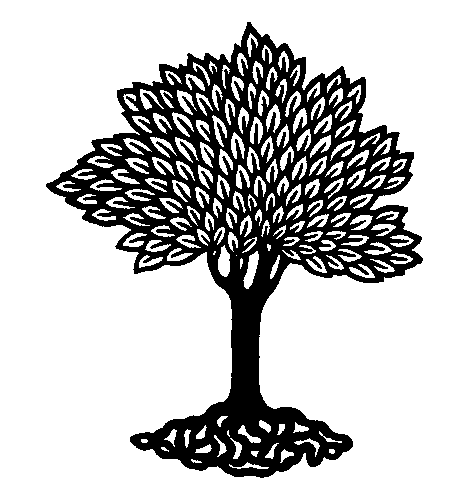
 |
Plant Taxonomy (BIOL308) - Stephen G. Saupe, Ph.D.; Biology Department, College of St. Benedict/St. John's University, Collegeville, MN 56321; ssaupe@csbsju.edu; http://www.employees.csbsju.edu/ssaupe/ |
Lab: Common Forest Herbs in Central Minnesota
Objectives: Upon completion of this field trip the student should be able to:
Introduction:
The purpose of today's lab is to introduce you to some of the more common
forbs that occur in forested areas in central Minnesota. Once the canopy
closes in the springtime, a plant on the forest floor gets very little light.
In fact, no more than 2% of the sunlight that reaches the treetops penetrates to
the forest floor. There are several consequences of this limited availability
of light. Compared to plants that grow in prairies, disturbed areas
and other more lighted habitats, herbaceous plants that grow in mature forests
after canopy closure: (1) Are usually less diverse. Fewer plants are
able to tolerate the low-light conditions. Not surprisingly, oak forests
are often better habitats to find woodland wildflowers than a maple-basswood
forest because oak forests are usually more open than maple-basswood forests.
This allows for more light penetration to the forest floor and more species are
able to take advantage of the additional light; (2) photosynthesize more slowly
because of the lower light levels. However, forest herbs typically utilize
light more efficiently - it takes very little light before they reach their
maximum rate of photosynthesis; (3) grow more slowly since they have less light
available for manufacturing food; (4) have thinner, larger leaves. The
larger leaves act as a bigger antennae to more efficiently harvest the limited
light that they receive; (5) tend to be supported by water pressure rather than
internal support tissues because the low light conditions limits the amount of
nutrients that they can invest in support structures. Thus, when picked,
forest herbs usually wilt more rapidly than plants grown in more open
environments.
St. John's is located in the Eastern Broadleaf Forest Province which extends roughly in a narrow diagonal swath from the SE corner of the statue northwest toward Lake Itasca (Minnesota Department of Natural Resources, 2005). This region formed a transition between the prairie to west and conifers to the north. In lab we will visit a forest on campus that is classified by the Minnesota DNR (2005) as a Central Mesic hardwood forest. Common trees in the area include sugar maple (Acer saccharum), northern red oak (Quercus rubra), basswood (Tilia americana), ironwood (Ostrya virginiana), red maple (Acer rubrum), and green ash (Fraxinus pennsylvanica).
The ground layer will be relatively sparse, in large part due to the destructive effect of earthworms and deer foraging. We will hopefully see many of the species in the listing below. There are relatively few grass-like plants that grow in these habitats. We will likely see mountain rice-grass (Oryzopsis asperifolia) and bearded shorthusk (Brachyelytrum erectum) with it pubescent leaf sheaths and leaves that are held at a 90 angle to the stem. We will observe a variety of clump-forming sedges (genus Carex), most of which will be in a vegetative state making them rather difficult to identify. In addition, there will likely be sugar maple and other tree seedlings. Among the shrubs that occur here include chokecherry (Prunus virginiana), pagoda dogwood (Cornus alternifolia), gooseberry (Ribes sp.), leatherwood (Dirca palustris) and hazel (Corylus sp.)
Assignment Due Today:
Lab Activity
During today's lab
we will walk around the St. John's campus to find the plants in
the PTK list below. We will go out rain or shine so dress appropriately
Plants to Know: (We will locate the following species that will be "fair game" on the PTK quiz/exam. Other species may also be included.)
|
APIACEAE - Carrot Family
ARACEAE - Arum family
ARALIACEAE - Ginseng Family
ARISTOLOCHIACEAE - Birthwort Family
ASTERACEAE (Compositae) - Sunflower Family
BERBERIDACEAE - Barberry Family
BETULACEAE - Birch Family
|
CAPRIFOLIACEAE - Honeysuckle Family
CELASTRACEAE - Staff-Tree Family
CORNACEAE - Dogwood Family
ERICACEAE - Heath Family
FABACEAE - Bean or Pulse Family
Amphicarpaea bracteata - Hog peanut GENTIANACEAE - Gentian Family
GERANIACEAE - Geranium Family
LILIACEAE - Lily Family
Maianthemum canadense -
Polygonatum spp. - Solomon's seal Smilacina sp. � False Solomon�s seal Streptopus roseus � Twisted stalk Trillium cernuum - Nodding trillium Uvularia sp. - Bellwort ONAGRACEAE - Evening Primrose Family
|
PHYRMACEAE - Lopseed Family
POACEAE - Grass Family
RANUNCULACEAE - Buttercup or Crowfoot Family
Anemone quinquefolia - Wood anemone Aquilegia canadensis - Wild columbine
Hepatica
Thalictrum dioicum - Meadow rue RUBIACEAE - Coffee Family
THYMELAEACEAE - Mezereum Family
VIOLACEAE - Violet Family
VITACEAE - Grape Family
|
References:
|
| Top | Plant Tax. Home | SGS Home | Disclaimer | |
Last updated:
09/15/2008 / � Copyright by SG
Saupe